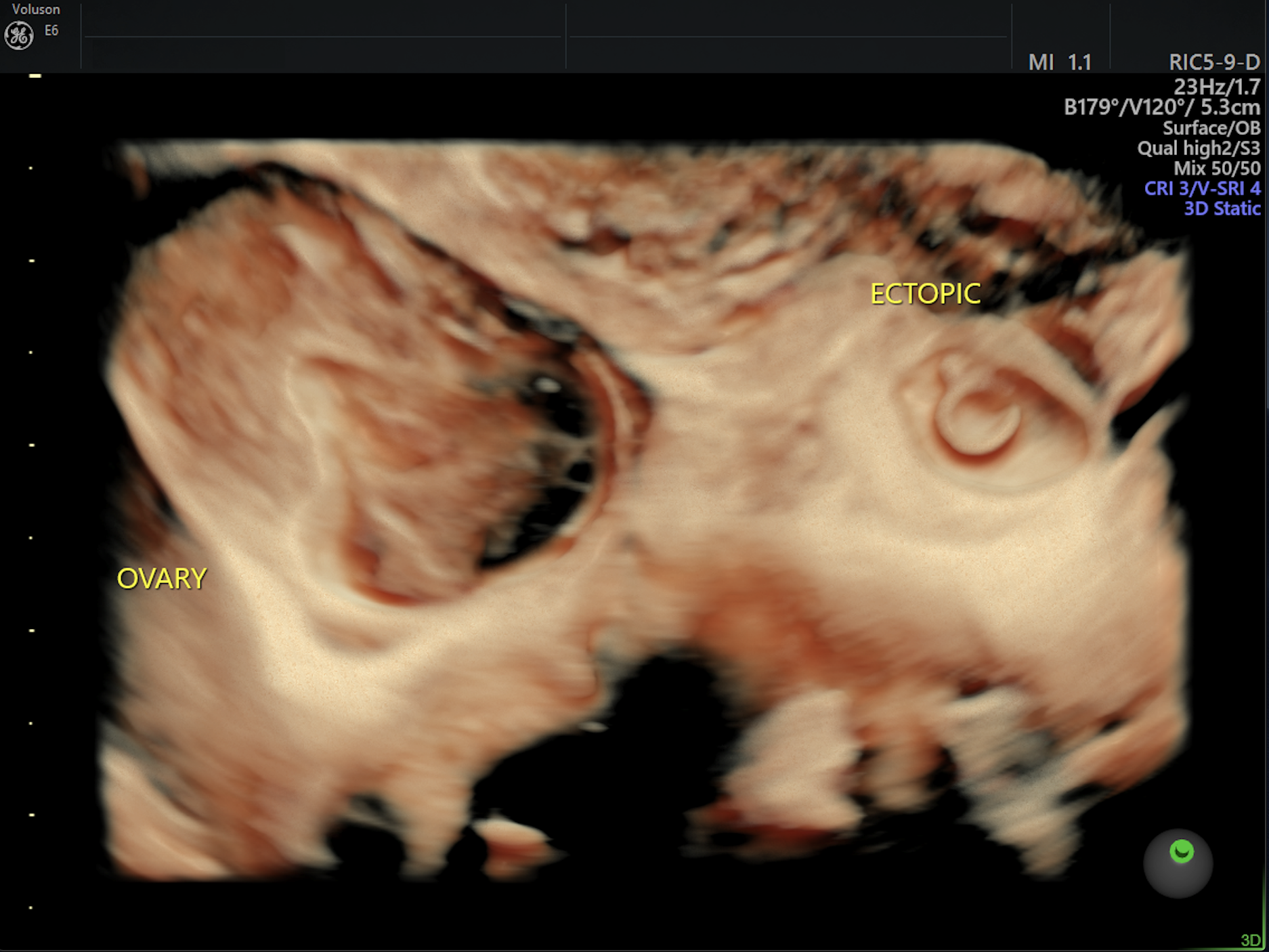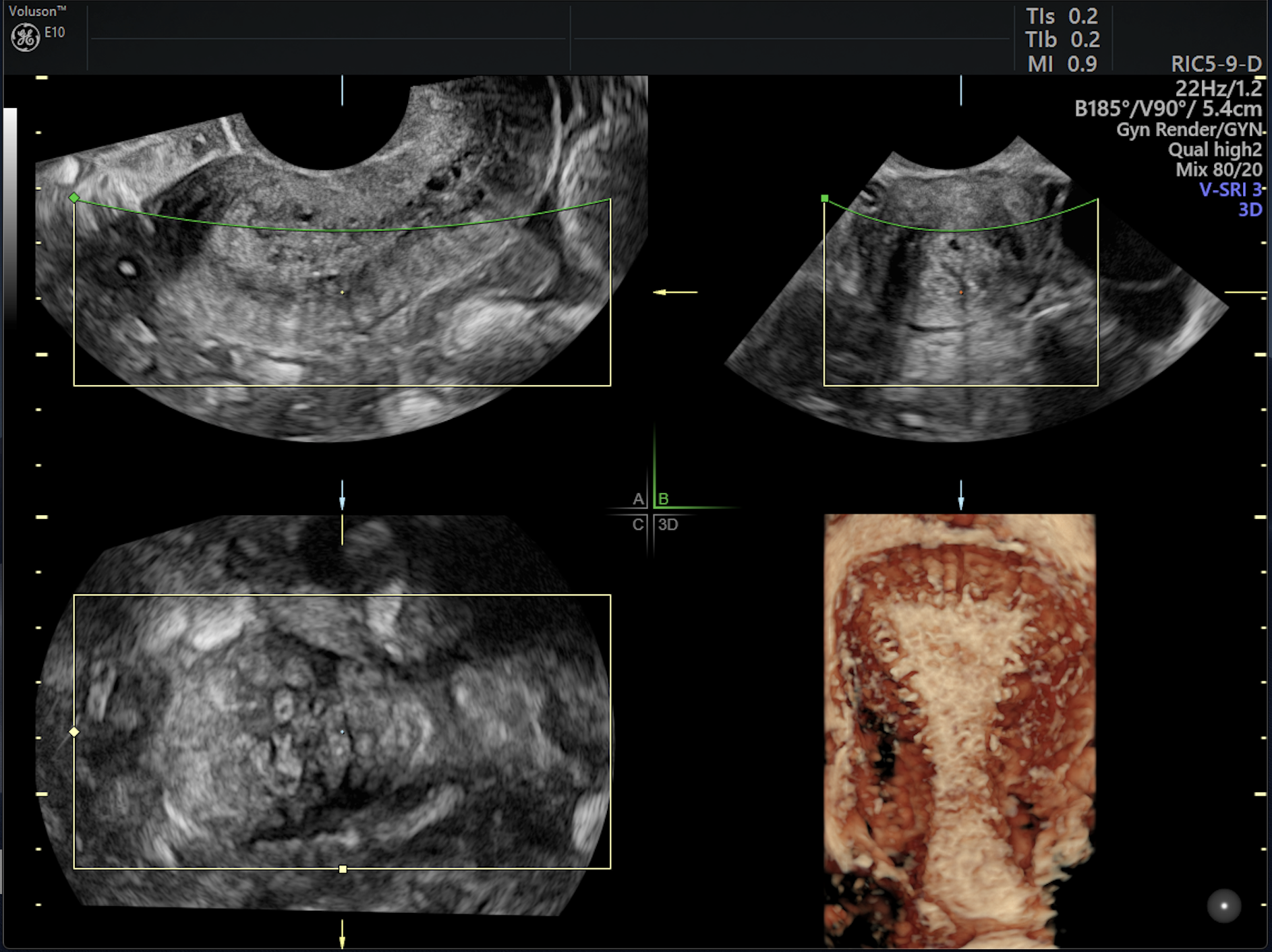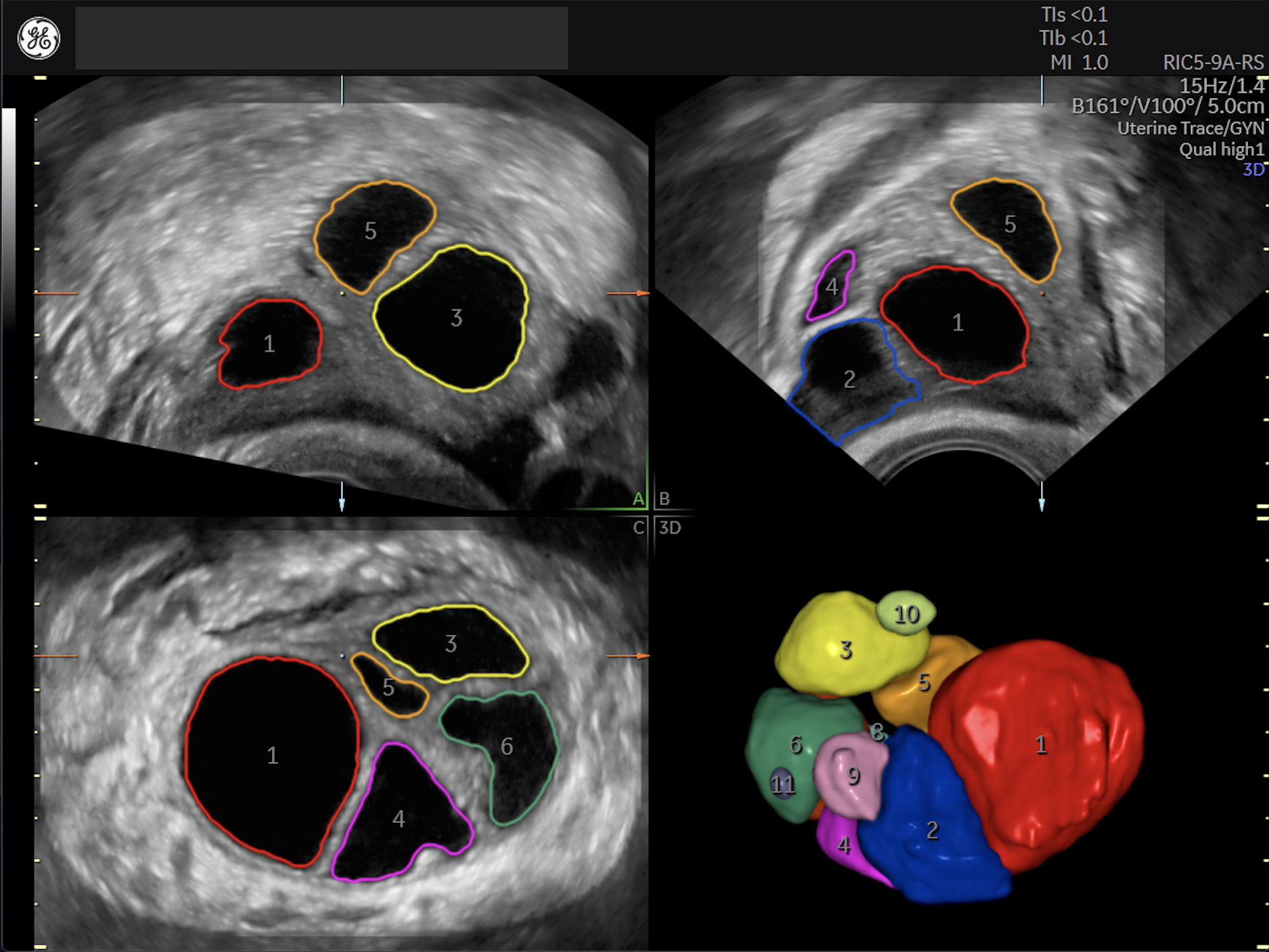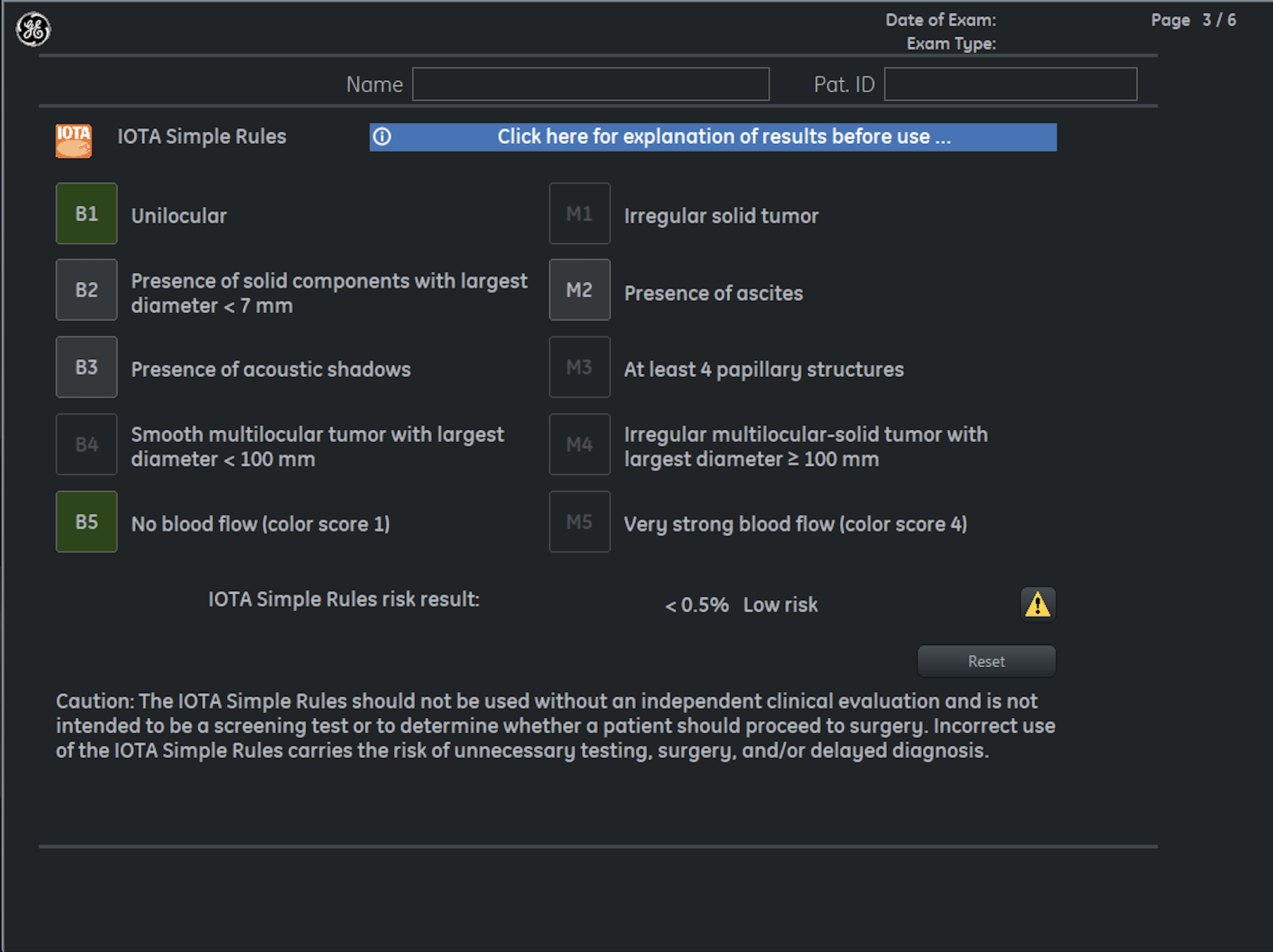Ultrasound plays a critical role in differential diagnosis of many common reproductive health issues, and the newest technology brings high-quality 3D ultrasound images to the table. This imagery is crucial for clinicians to be able to distinguish between different types of pelvic masses, between endometriosis and adenomyosis, and between an ectopic pregnancy, ovarian torsion and an ovarian cyst.
3D ultrasound units designed with ease of use in mind, incorporating features such as touchscreen technology, can help OB/GYNs in their day-to-day work of differentially diagnosing these common conditions. The quality of ultrasound imaging is critical to an efficient diagnosis, which helps during emergency department (ED) visits for pelvic pain, when time is of the essence. Ultrasound technology with enhanced workflow also supports the most efficient delivery of care to the patient.
Ectopic Pregnancy vs. Ovarian Cyst or Torsion
For people presenting to the ED with acute abdominal pain and/or vaginal bleeding, ectopic pregnancy is a crucial consideration for diagnosis, according to research published in Ultrasonography. An ectopic pregnancy diagnosis is made based on both laboratory values and ultrasound imaging results. The ultrasound appearance of an intrauterine gestational sac clearly identifies an early intrauterine pregnancy, but the ultrasound appearance of ectopic pregnancy can be both variable and subtle. The most obvious finding is an extraovarian heterogenous mass — although the researchers estimate that 15 percent to 35 percent of patients with ectopic pregnancy do not present with a mass on ultrasound. These patients must be carefully monitored with follow-up ultrasounds and beta-human chorionic gonadotropin (β-hCG) testing if ectopic pregnancy is suspected.

Ideally, patients presenting with pelvic pain and/or vaginal bleeding in the ED would undergo both transabdominal and transvaginal ultrasound evaluation. Transabdominal evaluation allows for a wider field of view of the pelvis and offers the best view of the uterine fundus. Transvaginal examination, on the other hand, provides the best near-field resolution, allowing for a more detailed assessment of the endometrial cavity, the ovaries and other adnexal structures, according to a review in the Journal of Medical Ultrasound.
Color Doppler techniques can also play a role in distinguishing between an ovarian cyst and an ectopic pregnancy. 3D Doppler ultrasound helps in volume calculation of ovaries while shortening examination time with no increase in patient discomfort. It can provide information on the quantity of moving blood cells per volume, which helps show the true vascularity of the ovary.
The absence of blood flow within the ovary using Doppler technology is a highly specific finding for ovarian torsion, but even with Doppler flow, torsion can be present. The whirlpool sign, which is a clockwise or counterclockwise wrapping of blood vessels around the central axis of the suspected torsion, is often present in ovarian torsion. Enlargement or edema of the ovary is another common ultrasound finding in ovarian torsion, according to an article in Clerkship Directors in Emergency Medicine.
Endometriosis vs. Adenomyosis
Modern, three-dimensional ultrasound technology can also help distinguish between endometriosis and adenomyosis. With an experienced sonographer, transvaginal ultrasound is a powerful tool for the diagnosis of ovarian endometriosis. The ultrasound may show hypoechogenic linear thickening or nodules/masses, which may have regular contours or not, according to an article in Clinical Obstetrics and Gynecology.
Adenomyosis can be visualized on ultrasound as a poorly defined lesion within the myometrium. Three key signs help identify adenomyosis: ectopic endometrial glands, muscular hyperplasia and hypertrophy, and hypervascularity. This shows up easily on color Doppler as a pattern of vessels that penetrate the uterine wall. 3D ultrasound can help the OB/GYN rule out other conditions such as uterine polyps or fibroids that may be causing symptoms, according to The Center For Innovative GYN Care.

Differential Diagnosis of Ovarian Disease
Three-dimensional ultrasound is also an important method for differential diagnosis of various ovarian pathologies. 3D Doppler ultrasound technology with vascular indices helps practitioners to gain a quantifiable understanding of the ovary's microcirculation. Ovarian volume, number and volume of follicles, and vascular indices can be easily assessed with 3D ultrasound images.

Roughly 7 percent of adnexal masses cannot be classified as benign or malignant with gray-scale ultrasound, according to research published in Ultrasound in Obstetrics and Gynecology, but 3D ultrasound can easily localize vascularity, helping to differentiate between benign and malignant ovarian tumors.
New 3D ultrasound units employing touchscreen technology and an optimized workflow can help OB/GYNs in their daily work, particularly in the emergency setting where accurate and speedy differential diagnosis is critical.





